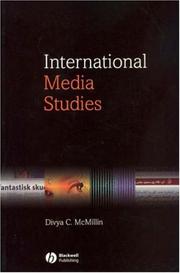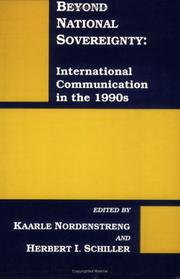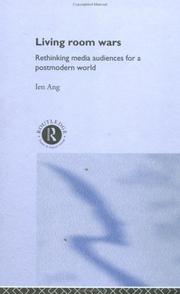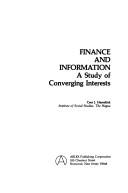| Listing 1 - 10 of 86 | << page >> |
Sort by
|
Book
Year: 2021 Publisher: Braga : UMinho Editora,
Abstract | Keywords | Export | Availability | Bookmark
 Loading...
Loading...Choose an application
- Reference Manager
- EndNote
- RefWorks (Direct export to RefWorks)
Este trabalho propõe uma teorização sobre o espaço global que a língua portuguesa ocupa no contexto da sociedade da informação. Procurámos analisar o espaço luso-brasileiro no contexto da rede das redes, a Internet, analisando a importância dos diferentes meios de comunicação social bem como a mobilidade proporcionada pelos media digitais e a movimentação de negócios em língua portuguesa no espaço luso-brasileiro. O espaço da lusofonia é analisado na perspetiva luso-brasileira e no quadro das relações que prevalecem na sociedade contemporânea globalizada. O trabalho parte de um corpus teórico diversificado, assente essencialmente na reflexão sobre os fenómenos da língua portuguesa no espaço luso-brasileiro, da globalização, das tecnologias de informação e comunicação, e da comunicação como fundadora, produtora e reprodutora da realidade. Neste enquadramento partimos do posicionamento da tradição sociocultural em ciências da comunicação, com contribuições de outras linhas de pesquisa e de estudos de outras áreas científicas, explorando a comunicação e o uso de novas tecnologias de informação como contexto para uma 'língua portuguesa global'. Procuramos mostrar, sugerir e apontar a relevância das novas tecnologias, o seu uso e do ambiente por elas criado, para a comunicação em língua portuguesa na contemporaneidade. Apresentamos a análise das relações luso-brasileiras na atual sociedade e a emergência da 'língua portuguesa global'. Esta análise interpretativista dos resultados demonstra o papel da língua portuguesa como um interface, contexto e veículo comunicacional, numa altura em que se assiste a um maior interesse pela cultura portuguesa e a uma transformação do Brasil.

ISBN: 9781405118095 9781405118101 1405118105 1405118091 Year: 2007 Publisher: Malden, Mass. Blackwell
Abstract | Keywords | Export | Availability | Bookmark
 Loading...
Loading...Choose an application
- Reference Manager
- EndNote
- RefWorks (Direct export to RefWorks)
Mass communications --- Communication, International. --- Globalization.

ISBN: 9780893919603 0893919608 Year: 1995 Publisher: Norwood (New Jersey) : Ablex,
Abstract | Keywords | Export | Availability | Bookmark
 Loading...
Loading...Choose an application
- Reference Manager
- EndNote
- RefWorks (Direct export to RefWorks)
Communication --- Communication, International. --- Sovereignty. --- International cooperation.
Book
ISBN: 0472072447 0472120786 0472900145 0472052446 Year: 2014 Publisher: Ann Arbor : The University of Michigan Press,
Abstract | Keywords | Export | Availability | Bookmark
 Loading...
Loading...Choose an application
- Reference Manager
- EndNote
- RefWorks (Direct export to RefWorks)
International communication as a field of inquiry is, in fact, not very “internationalized.” Rather, it has been taken as a conceptual extension or empirical application of U.S. communication, and much of the world outside the West has been socialized to adopt truncated versions of Pax Americana’s notion of international communication. At stake is the “subject position” of academic and cultural inquirers: Who gets to ask what kind of questions? It is important to note that the quest to establish universally valid “laws” of human society with little regard for cultural values and variations seems to be running out of steam. Many lines of intellectual development are reckoning with the important dimensions of empathetic understanding and subjective consciousness.In Internationalizing “International Communication”, Lee and others argue that we must reject both America-writ-large views of the world and self-defeating mirror images that reject anything American or Western on the grounds of cultural incompatibility or even cultural superiority. The point of departure for internationalizing “international communication” must be precisely the opposite of parochialism - namely, a spirit of cosmopolitanism. Scholars worldwide have a moral responsibility to foster global visions and mutual understanding, which forms, metaphorically, symphonic harmony made of cacophonic sounds.
Communication, International. --- International communication --- World communication --- Communication

ISBN: 0415128005 Year: 1996 Publisher: London New York : Routledge,
Abstract | Keywords | Export | Availability | Bookmark
 Loading...
Loading...Choose an application
- Reference Manager
- EndNote
- RefWorks (Direct export to RefWorks)
Mass media --- Communication, International. --- Audiences. --- Influence.
Book
ISBN: 9781412970105 Year: 2010 Publisher: Los Angeles : SAGE,
Abstract | Keywords | Export | Availability | Bookmark
 Loading...
Loading...Choose an application
- Reference Manager
- EndNote
- RefWorks (Direct export to RefWorks)
Book
ISBN: 2747543285 9782747543286 Year: 2003 Publisher: Paris : Editions L'Harmattan,
Abstract | Keywords | Export | Availability | Bookmark
 Loading...
Loading...Choose an application
- Reference Manager
- EndNote
- RefWorks (Direct export to RefWorks)
Book
ISBN: 9781107031302 9781107628816 Year: 2017 Publisher: University of Cambridge : Cambridge,
Abstract | Keywords | Export | Availability | Bookmark
 Loading...
Loading...Choose an application
- Reference Manager
- EndNote
- RefWorks (Direct export to RefWorks)
James M. Wilce's textbook introduces students to the study of language as a tool in anthropology. Solidly positioned in linguistic anthropology, it is the first textbook to combine clear explanations of language and linguistic structure with current anthropological theory. It features a range of study aids, including chapter summaries, learning objectives, figures, exercises, key terms and suggestions for further reading, to guide student understanding. The complete glossary includes both anthropological and linguist terminology. An Appendix features material on phonetics and phonetic representation. Accompanying online resources include a test bank with answers, useful links, an instructor's manual, and a sign language case study. Covering an extensive range of topics not found in existing textbooks, including semiotics and the evolution of animal and human communication, this book is an essential resource for introductory courses on language and culture, communication and culture, and linguistic anthropology.
Periodical
Abstract | Keywords | Export | Availability | Bookmark
 Loading...
Loading...Choose an application
- Reference Manager
- EndNote
- RefWorks (Direct export to RefWorks)
Communication, International --- Mass media --- International communication --- World communication --- Communication, International. --- Mass media. --- Communication --- Mass communication --- Media, Mass --- Media, The

ISBN: 0893910910 Year: 1983 Publisher: Norwood, N.J. Ablex
Abstract | Keywords | Export | Availability | Bookmark
 Loading...
Loading...Choose an application
- Reference Manager
- EndNote
- RefWorks (Direct export to RefWorks)
316.771 --- Communication --- -Communication, International --- International communication --- World communication --- Communication, Primitive --- Mass communication --- Sociology --- Informatiekunde --- Economic aspects --- International finance --- Communication, International. --- International finance. --- Economic aspects. --- 316.771 Informatiekunde --- Communication, International --- International monetary system --- International money --- Finance --- International economic relations
| Listing 1 - 10 of 86 | << page >> |
Sort by
|

 Search
Search Feedback
Feedback About UniCat
About UniCat  Help
Help News
News